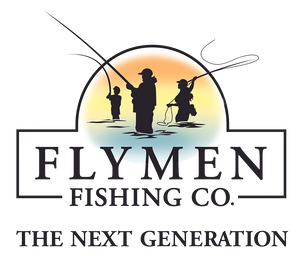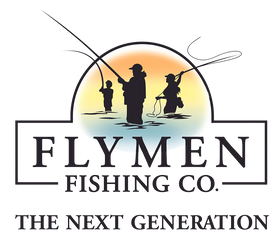Tricks of the Fly Tying Trade: 3 Everyday Objects to Boost Your Tying Productivity
As a Commercial Tyer, I Always Tie My Flies in Large Batches
Efficiency is the name of the game here, and being that I produce over 50,000 flies per year, I've developed some methods to boost my fly output over time. Here are some simple tricks, some of which I've been using for well over a decade, that you can use to make your own fly tying quicker and easier.
1. Wooden Clothespins
Tired of holding your molded eyes together until the glue dries? Whether you're pressing them on one at a time or waiting for adhesives to dry, there is an easier way!

Wooden clothespins are the ideal helper because of their wide surface area and their wooden surface won't slide or scratch the molded eye surface.
5 Proven Tips to Help You Tie More Flies
Even better is that the best place to purchase these is from your local dollar store. You don't want the the spring tension on the pins to be too tight and you will find the good quality ones squeeze too tightly, causing adhesive to leak out the sides, which makes the dollar store clothespins the perfect fit for fly tying as the spring tension is less tight.
This clothespin technique is also useful on Fish-Skull Fish-Masks and Baitfish Heads. Why? For one thing, the Living Eyes are HD molded eyes and covering it with UV resin to hold the eye in place can dilute the realistic appearance.
Try prepping Fish-Masks and Living Eyes with wooden clothespins to save time.
This method is well suited for use with eyes from 1.5mm to 18mm and with E6000 adhesive or Devcon 5-minute epoxy.
2. Cauterizers
Battery operated cauterizers are an excellent inclusion to your fly tying bench toolbox. Primarily used in the medical industry to seal off a wound or an incision, disposable sterile cautery pens can reach temperatures of up 1200 degrees Celsius.
Temperate Bass Flies: How to Diversify Your Fly Box
These precision tools are most useful for clearing out the eyelets of stray fibers and other fussy materials. I also use them regularly to clear out runny head cements that have dried or cured resin. The cauterizers are even hot enough to burn through 2-ton epoxy! They were once only available at medical facilities and outlets, but are now a common tool and easily found at your local fly shop.
Where the Heck Is My Bobbin? The Messy Fly Tyer’s Guide To Organizing Fly Tying Materials
I do a lot of custom work with EP fibers and similar materials. Super glue was the norm for attaching the moulded or tape eyes to the fibres, but this was never permanent and came off readily with with any slight impact from the side of the eye. I originally found E6000 glue and 5-minute epoxy much more effective.
Creating a well for eye placement with a cauterizer.
Now I make eyes bomb proof by using the cauterizer to burn a small well or hole in the EP fibres, just enough to expose the wire base or hook itself. This technique creates a solid foundation for the glue/epoxy and eye to adhere to rather than just fibres itself. The well also prevents glue from running out and onto the body resulting in a cleaner fly.
Fly Design and Material Selection
Using a clothespin to apply consistent even pressure throughout the drying process makes this method one of the most solid and efficient ways to adhere eyes on a production scale.
3. Wooden Craft Dowels
Here’s another commercial fly tyer tip for when you're putting eyes onto Fish-Skull Fish-Masks — use wooden Craft Dowels to hold several of them together.
Fly Tying Video: Fish-Mask Double Deceiver
This makes it easy for you to place eyes on accurately and ideal for gluing or UV curing stages. You can use up 2-3 dowels on the larger size Fish-Masks.
Get Tying!
The next time you are tying with EP Fiber, craft fur, baitfish synthetics, or Body Tubing, use these simple objects to cut down your production time and get back to your vise more quickly, or better yet, out fishing!
Want more articles like this?
Join the Flymen Mailing List at the bottom of the page!
About Dennis Gamboa:










Please add my e-mail address to your Flyman Mailing List
clothespins all so make good hackle pliers
Typing tips, please.
Typing tips, please.
Great tips always something new to.learn.
Sign me up.
Leave a comment